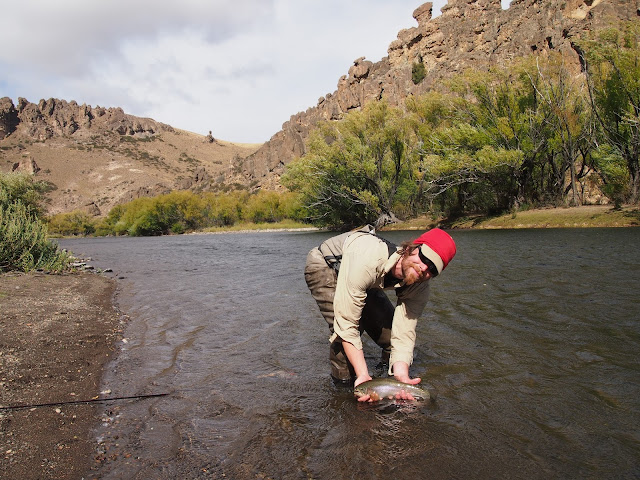Last week I was in the NWT doing some community
consultations and some scouting. We are
in the process of gearing up for a small summer heli-portable program in the
Sahtu and some new exploration blocks were just posted in the far northern
Sahtu and southern Gwichin. It was a
classic northern trip: whirlwind-y, discombobulated, and in a constant state of
flux right up till when it was done. The
trip also covered a huge amount of ground using a variety of interesting modes
of transportation.
Day 1: Drove from Pincher to Calgary in the K Kart. Drove from Calgary to Edmonton with my boss,
Al, in a rented Jetta. The K Kart drives
like a gem, but has no muffler (no exhaust system, actually) so is really
loud. I’ve decided to wear ear plugs
while driving rather than fix the little guy.
But hey, at least it’s registered.
Jettas suck.Day 2, part 1: Flew from Edmonton to Yellowknife to Norman Wells in a Boeing 737 Combi. This is a half passenger – half cargo plane that’s really uncomfortable. But, it gets the job done. On the plus side Canadian North still serves a full meal en route and it’s not half bad. In Yellowknife we picked up Marty, our northern affairs guy, and about 100 lbs of steaks for consultations.
Day 2, part 2: Flew from Norman Wells to Tulita in a Twin Otter. I’d never flown in one of these before and it was awesome. I swear we only needed about 200 feet of runway before we were airborne. In the evening we hosted a BBQ in Tulita.
 |
| Overseeing. And looking fab. |
There’s an old bone yard in Tulita down by the river with lots of awesome old oilfield trucks and machinery.
 |
| All oilfield vehicles get permit numbers. One of the last numbers issued was 5705. |
Day 3: Flew from Tulita to Norman Wells in an Astar 350 B2
via a detour to the Carcajou River.
 |
| The Mackenzie Mts in the distance. One of our lines up front. |
Day 4: Rode some bikes around Norman Wells.
 |
|
The only
sensible way to travel at 3 am.
|
Day 5, part 1: Flew from Norman Wells back to Tulita in that
same Astar to pick up some elders to show them some of our seismic program from
the past couple years.
Day 5, part 2: Dropped the elders off in Tulita and flew
back to Norman Wells and then on to Inuvik.
En route from NWs to Inuvik we did a preliminary scout of some new lease
blocks that were just posted by the NWT & Feds for exploration. We saw some pretty spectacular country.
 |
| The Mountain River |
 |
| The Ramparts River |
 |
| The Arctic Red River |
 |
| Melting permafrost makes for pretty epic slumps. |
The country in this part of the world is stunning. Honestly, I'm not sure I've ever been to a place this remote. In all the time I've spent outside in my life, this may be the first time I've ever been somewhere with nothing. Nada.
 |
| This is a shale formation cut by the Arctic Red River. |
 |
| The other major shale oil formations being produced right now, like the Bakken in the Dakotas, Montana, Sask., and AB and the Eagle Ford in Texas, are about 8 m thick. |
Day 6, part 1: Flew from Inuvik to Edmonton to Calgary in
the same Boeing Combi. This time it was
full of people; no cargo.
Day 6, part 2: Picked-up Bry-dog (Andrea’s
brother) at the Calgary airport and headed back in Pincher in the K Kart.
All and all the trip was about 5,500 km; from almost the southern border with the US to almost the Beaufort Sea.
All in a mere 6 days. And it was really fun.







































